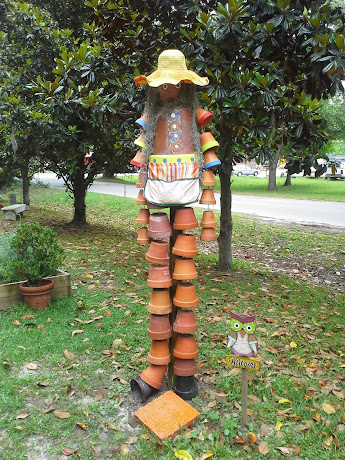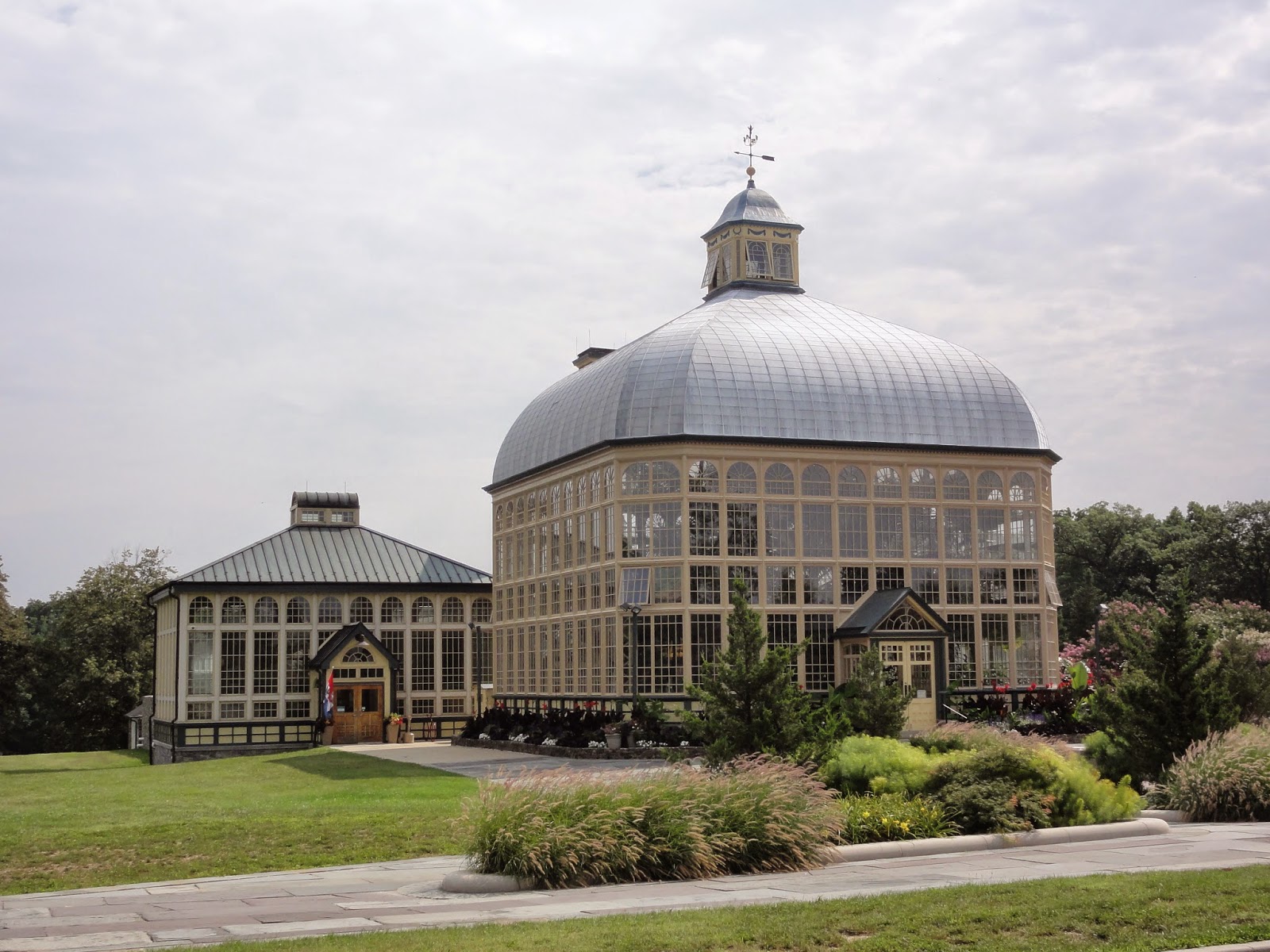 |
| Howard Peters Rawlings Conservatory and Botanic Gardens, Baltimore, MD |
|
The
Howard Peters Rawlings Conservatory and Botanic Gardens, located at the western edge of Baltimore's historic Druid Hill Park, is the second oldest surviving glass conservatory in America. Originally known as the
Baltimore or Druid Hill Conservatory, it opened to the public in 1888. America's oldest glass conservatory is
San Francisco's Conservatory of Flowers, opened in 1879.
Before exploring the conservatory, it would be helpful to know a little about its historical context. Let's begin with the land and the Susquehannocks. The Historical Society of Baltimore has published an excellent article -
The Susquehannocks' Prosperity and Early European Contact by Adam Youssi - that you should read.
According to Youssi, a very large area that included Druid Hill Park was once claimed by the Susquehannocks and surely contested by others. The Susquehannocks had reputedly mastered the art of trade. A Susquehannock party claiming to have authority ceded the land (maybe belonging to other people), to one
William Claiborne. Many arguments ensued. Typical of dominant governments, England settled the matter in 1638 by putting its foot down and forfeiting the land to its own
George Calvert (1605-1675), Second Lord Baltimore.
"Lord Baltimore assigned the land to George Buchanan, one of several
original commissioners responsible for the establishment of
Baltimore City. The Buchanan-Rogers family then cultivated the area
as a country estate and plantation."
Eventually, England lost the property in what was to be
known as the
American War for Independence, confirmed by the
War of 1812 and celebrated on Maryland DMV license plates remembering when Maryland aspired to be a freer state.
The land for Druid Hill Park was purchased around 1860 when the nation's city dwellers were passionate about developing large, landscaped urban parks for their enjoyment. Before that, garden cemeteries such as
Mount Hope Cemetery, Bangor, ME were popular urban resorts.
America's interest in picturesque gardens was informed by European Romantic ideals as expressed in
Edmund Burke's
Philosophical Enquiry into the Origin of Our Ideas of the Sublime and the Beautiful,
William Gilpin's
Observations on the River Wye..., Paris'
Bois de Vincennes and
Bois de Boulogne, and London's
Hyde Park.
New York's Central Park is a notable American example of those influences.
 |
| Rowhouses on Auchentoroly Terrace |
In 1888, the newly completed Baltimore Conservatory was within sight of some of the city's finest homes in what is now the
Parkview/Woodbrook neighborhood. Mansions built by John Morris Orem, a Baltimore dry goods magnate, were constructed (c.1860-1876) facing Auchentoroly Terrace.
Magnificent rowhouses with diverse, intricate architectural features
faced the park. Most of them still survive, but age and abuse have taken
their toll. Along with Baltimore City, the Baltimore Conservatory suffered financial setbacks during years of decline.
Around the turn of the 21st century, the conservatory was scheduled for renovation. Money became available. The Baltimore Conservatory was renamed in honor of Delegate
Howard Peters Rawlings (1937-2003). Rawlings was the first African-American to chair the powerful Appropriations Committee of the Maryland House of Delegates. Read more about
"Pete" Rawlings at Wikipedia.
The Howard Peters Rawlings Conservatory consists of five "houses": the original Palm House, the Orchid Room, Tropical House, Mediterranean House and Desert House.
The original
Palm House is the most imposing structure. Though relatively small in comparison to some conservatories, it has contained a fine collection including the
Bismarck palm (Bismarkia nobilis),
European fan palm (Chamaerops humilis),
cat palm (Chamaedorea cataractarum),
Christmas palm (Adonidia merrillii), dwarf coconut palm (
Cocos nucifera var. ),
metallic palm (Chamaedorea metallica),
lady palm (Rhapis excelsa),
Fiji fan palm (Pritchardia pacifica), Chinese fan palm (
Livistona chinensis),
bottle palm (Hyophorbe lagenicaulis),
and
foxtail palm (Wodyetia bifurcata).

The modest Orchid Room exhibits a changing exhibit of flowering epiphytes. Orchid enthusiasts will find plenty in bloom.
Visitors to the Tropical House will be acquainted with a diverse collection of species both familiar and unfamiliar. (Follow links for pictures.) The ginger family (
Zingiberaceae) is very well represented with
Red Tower ginger (Costus comosus),
Costus curvibracteatus 'Green Mountain',
Variegated Spiral ginger (Costus amazonicus variegata),
Torch ginger (Etlingera elatior 'Thompsonae') and
Butterfly ginger (Hedychium coronarium). Two species,
Creeping fig (Ficus pumila) and
Spikemoss (Selaginella kraussiana) are at their best as ground covers. Other favorite tropicals include:
 |
| Blushing Bromeliad (Neoregelia carolinae 'Tricolor') |
 |
| Firecracker shrub (Hamelia patens) |
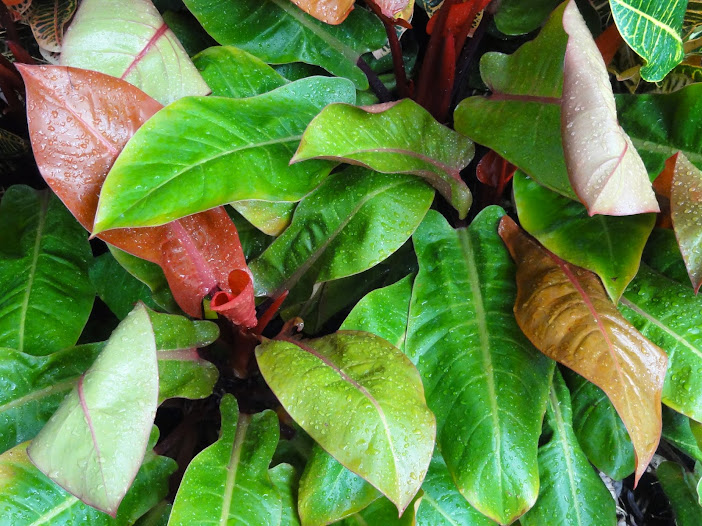 |
| Philodendron 'Prince of Orange' |
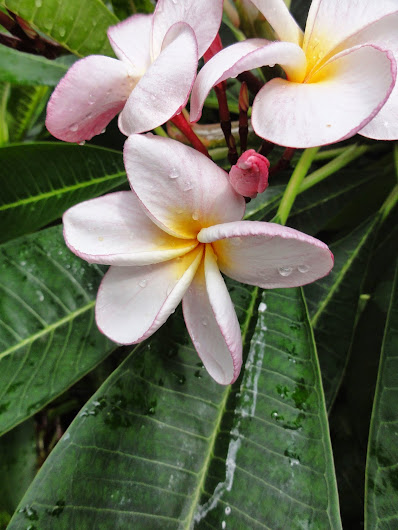 |
| Plumeria |
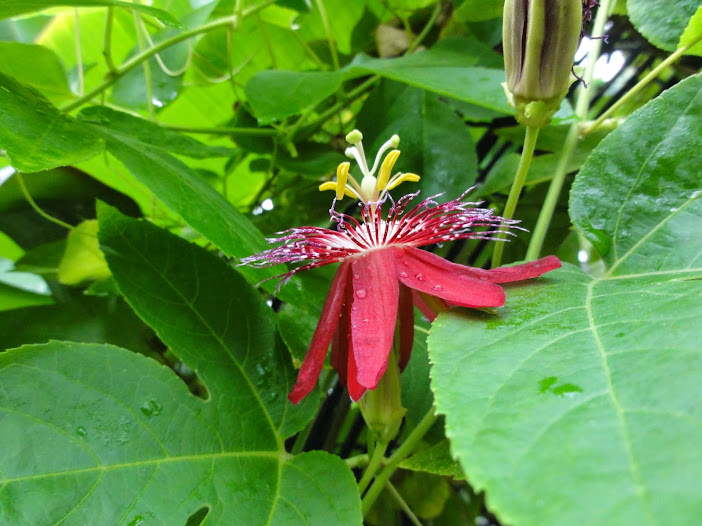 |
| Red Passionflower (Passiflora coccinea) |
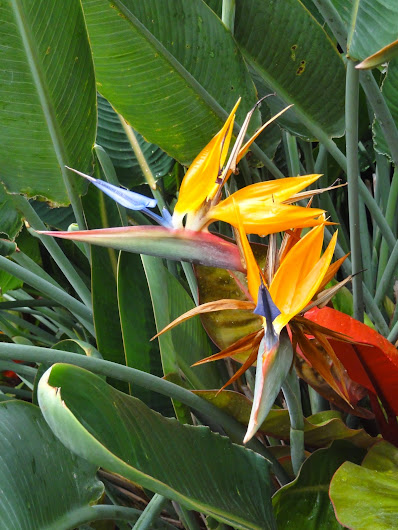 |
| Bird-of-Paradise (Strelitzia reginae) |
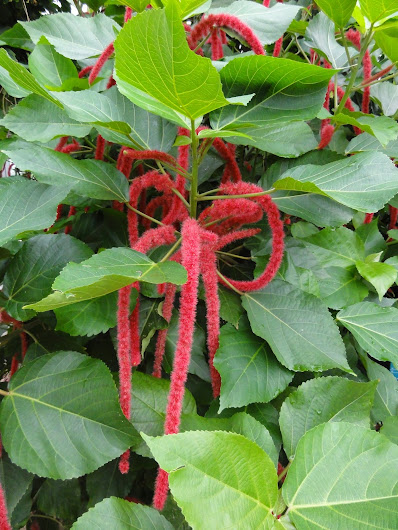 |
| Chenille Plant (Acalypha hispida) |
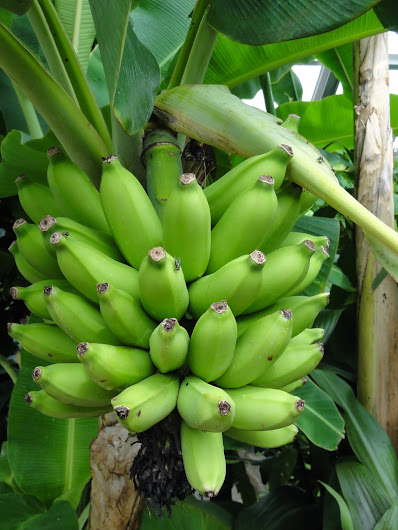 |
| Bananas! (Musa spp.) |
While the Tropical House is literally dripping with humidity, the sound of
fountains in the Mediterranean House provides sensible refreshment in its semi-arid environment. The good collection of suitable trees, shrubs and herbs include:
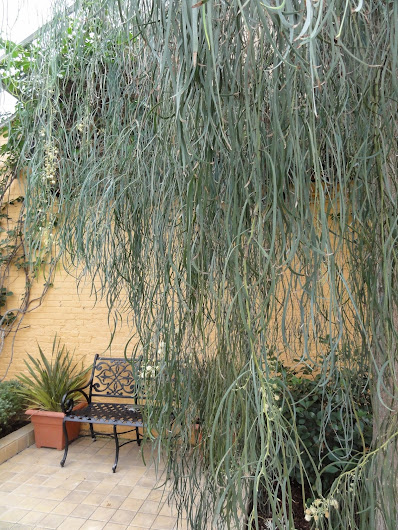 |
| Shoestring Acacia (Acacia stenophylla) |
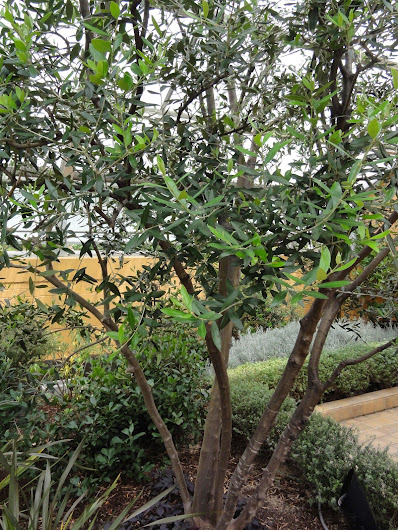 |
| Olive (Olea europaea) |
 |
| Variegated Oleander (Nerium oleander 'Variegata') |
|
 |
| Germander (Teucrium chamaedrys) |
Deserts are among the harshest places on earth, yet they are habitable sometimes by creatures with the
most bizarre appearances. You'll discover lots of them in the Desert House, such as:
 |
| Tortoise plant (Dioscoria macrostachya) |
 |
| Hedgehog Agave (Agave stricta) |
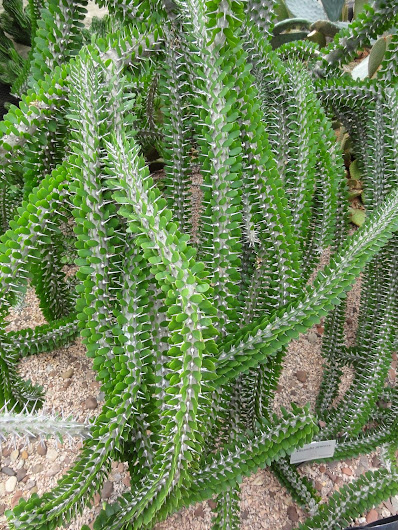 |
| African Ocotillo (Alluaudia procera) |
 |
| Euphorbia baioensis |
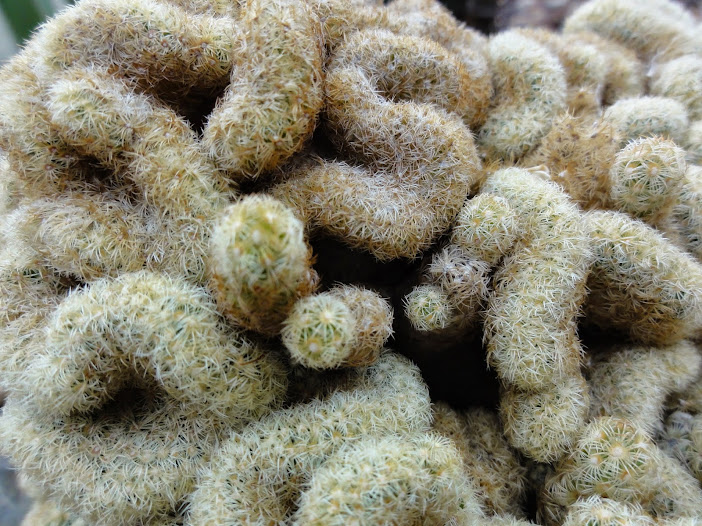 |
| Brain Cactus (Mammilaria elongata 'Cristata') |
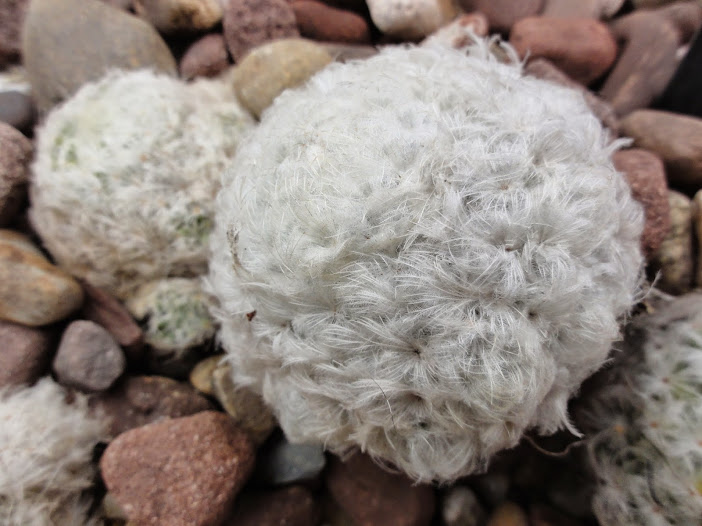 |
| Feather Cactus (Mamillaria plumosa) |
 |
| Panda plant (Kalanchoe tomentosa) |
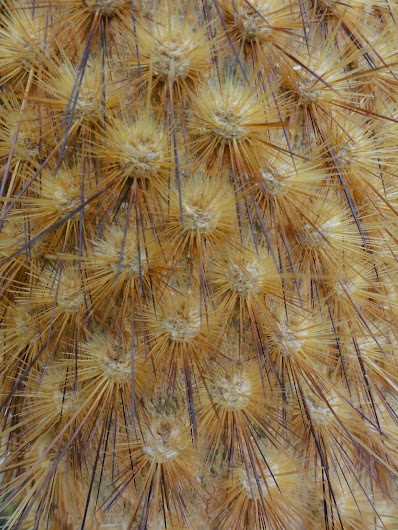 |
| Galapagos Prickly Pear (Opuntia galapageia) |
 |
| Bunny Ears Cactus (Opuntia macrodasys) |
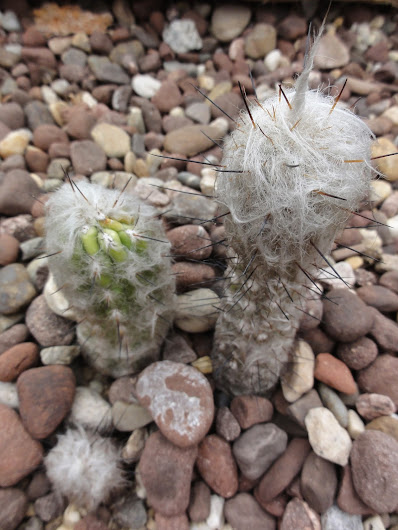 |
| Old Man Cactus (Oreocereus spp.) |
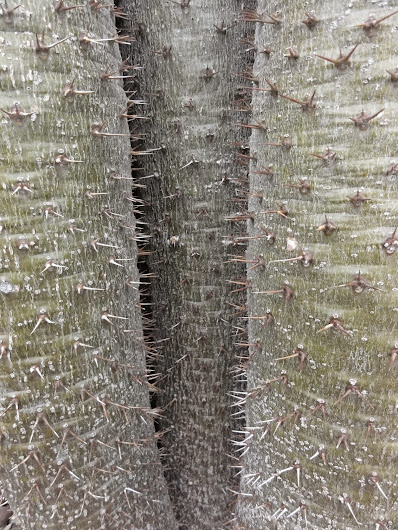 |
| Madagascar Palm (Pachypodium lameri) |
The botanical garden adjoining the Baltimore Conservatory is quite small, but good displays of some new plants will interest any gardener.
Surrounding the conservatory, Druid Hill Park offers other cultural and recreational opportunities including the developing
East Coast Greenway. which passes by the conservatory's front door. Avid bicyclists and serious pedestrians take note!
Return to
GoGardenNow.com



